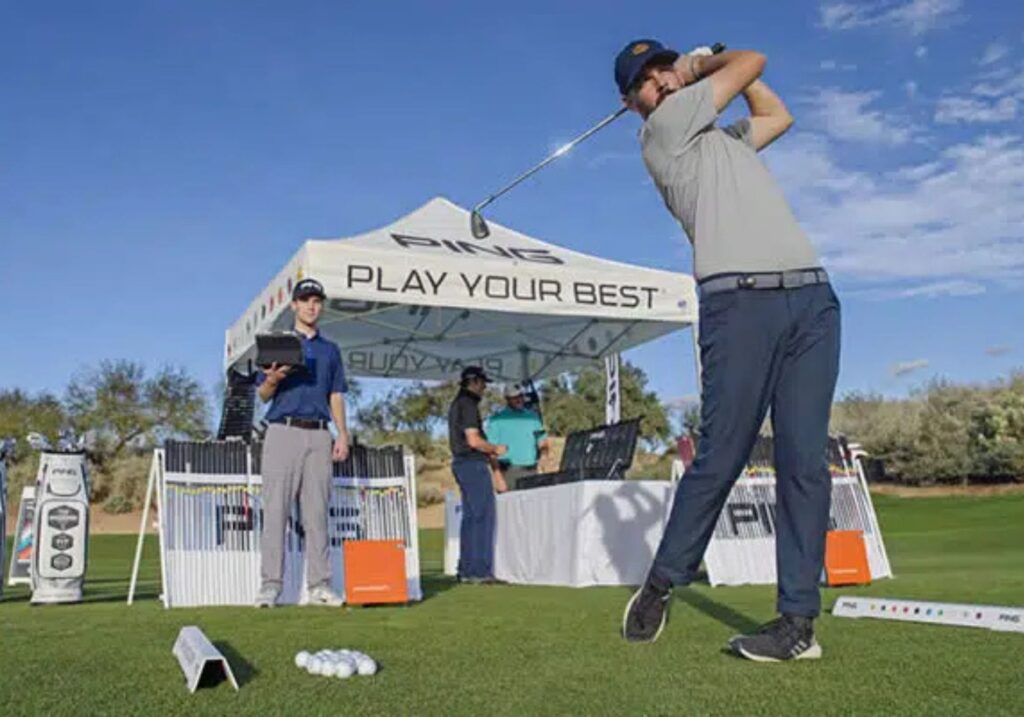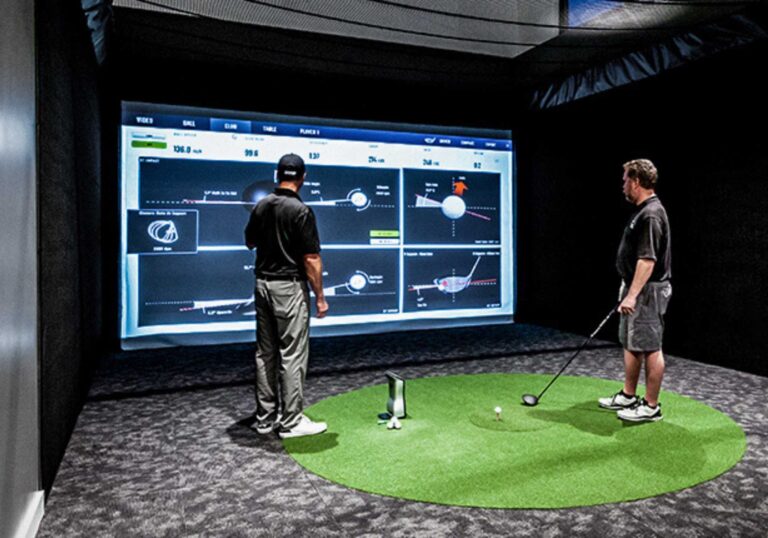You’ve done the right thing and gone for a club fitting. You walk out with a printout or photos full of numbers: angle of attack, club path, ball speed, smash factor, spin rate, dynamic loft, and more. It feels like you’ve just taken a crash course in launch monitor science.
But what do these numbers actually tell you? And more importantly, how do they help you play better golf?
Here’s a simple breakdown of the most common fitting terms and why they matter to your game.
Angle of attack (AoA)
This measures whether your club is moving upward or downward when it strikes the ball.
- A positive number means you’re hitting up on it (ideal for drivers)
- A negative number means you’re hitting down (expected with irons and wedges)
Why it matters:
With a driver, hitting up increases launch and reduces spin, often leading to more distance. Most amateurs hit down too much with the driver, which creates excess spin and lower launch. For irons, a descending strike is preferred.
Typical ranges:
- Driver: +2 to +5 degrees
- Irons: -2 to -5 degrees
Club path
This tells you the direction the club is swinging through impact, relative to your target line.
- In-to-out path = club moves to the right of target at impact (can produce draws)
- Out-to-in path = club moves to the left (can produce fades or slices)
Why it matters:
Your club path helps determine your shot shape. Combine it with face angle, and you’ve got the formula for a draw, fade, hook, or slice.
Face angle
Face angle tells you where the clubface is pointing at impact.
- Open means right of target (for right-handed golfers)
- Closed means left
- Square means straight at the target
Why it matters:
Face angle is the main factor in where your ball starts. Even if your swing path is perfect, an open or closed face will send your ball offline.

Ball speed
Ball speed is how fast the ball leaves the clubface.
Why it matters:
It’s one of the biggest factors in how far you can hit the ball. Center-face contact and a solid smash factor are key to maximizing ball speed.
Benchmarks for driver:
- Beginners: 130–145 mph
- Intermediate: 145–160 mph
- Advanced: 160–175 mph
- PGA Tour average: 170+ mph
Clubhead speed
This is the speed of your club at the moment it strikes the ball.
Why it matters:
More clubhead speed gives you the potential for more distance, but only if you’re hitting the ball solidly.
Benchmarks for driver:
- Average amateur: 90–100 mph
- PGA Tour average: ~113 mph
Smash factor
Smash factor = ball speed divided by clubhead speed. It shows how efficiently you’re transferring energy into the ball.
Why it matters:
If you swing at 100 mph and your ball speed is 150 mph, that’s a smash factor of 1.50, which is excellent with a driver. Lower numbers indicate missed center strikes or inefficient contact.
Ideal smash factors:
- Driver: 1.45–1.50
- 7-iron: 1.30–1.35
- Wedges: 1.20–1.25
Launch angle
This is the angle at which the ball leaves the clubface.
Why it matters:
Launch angle helps determine how high your shots fly. It’s influenced by both dynamic loft and angle of attack. For a driver, a launch angle between 12 and 15 degrees is often optimal.
Too low and you won’t carry the ball far enough. Too high and you might lose roll-out distance.
Spin rate
This is the amount of spin on the ball, measured in revolutions per minute (RPM).
Why it matters:
Spin stabilizes the ball in flight, but too much can balloon the ball and kill distance. Too little and the ball may not stay airborne or stop on the green.
Spin benchmarks:
- Driver: 2,000–2,700 RPM
- 7-iron: 6,000–7,000 RPM
- Wedges: 8,000–10,000 RPM
Dynamic loft
This is the actual loft of the clubface at impact. It’s not the number on your club but how much loft you deliver.
Why it matters:
Too much dynamic loft creates high shots with less distance. Too little and the ball launches too low. Dynamic loft is influenced by your swing mechanics, including shaft lean and hand position at impact.

Spin axis
This describes the tilt of the ball’s spin, which determines if the shot curves left, right, or stays straight.
- Positive spin axis: fade or slice
- Negative spin axis: draw or hook
- Zero spin axis: straight shot
Why it matters:
The more tilted the spin axis, the more the ball will curve. This is one of the most telling stats for understanding your shot shape tendencies.
Carry distance vs total distance
Carry distance is how far the ball flies in the air. Total distance includes carry plus roll-out.
Why it matters:
Knowing both helps with strategy. For example, you want enough carry to clear a bunker, but total distance helps you manage rollout on firm fairways.
Side angle and side spin
These numbers tell you how far off-center the ball starts (side angle) and how much it curves in the air (side spin).
Why it matters:
Together, they explain offline shots. If your ball starts right and curves even further right, it’s likely an open face combined with an in-to-out path and side spin tilting the spin axis.
Final thoughts
Fitting numbers can feel overwhelming, but they’re simply a snapshot of how you swing the club and how the ball reacts. Focus first on the big five: club path, face angle, angle of attack, ball speed, and spin. These give you the clearest insight into what’s helping or hurting your game.
The real power of these numbers is in knowing what to change. If your angle of attack is too steep, you can work on shallowing. If your smash factor is low, you can practice center-face contact. Understanding your data is the first step toward better golf.
Let’s hear from you
Have you had a fitting that changed how you look at your swing? Were there any numbers that surprised you or helped you choose the right gear? Share your story—we’d love to hear how data helped you improve.


2 Comments
My clubhead speed is 90 to 95 miles an hour. I hit pro V ones what other balls would be good for me to hit
IMO a club fitting is a waste of money until you get better with your impact points. (especially a new beginner.) 1. Ground contact. 2. Face angle 3. Club path 4. Impact point on club face. These can be improved with a hitting net outdoors or indoors, a hitting mat such as a divot board or the like. Foot powder spray on the club face (toe, heel, high, low) These things can be purchased for under $200. After some work on impact and improvement maybe then get a fitting. A fitter has nothing to work with until these skills are improved to a point where he/she has something to measure.